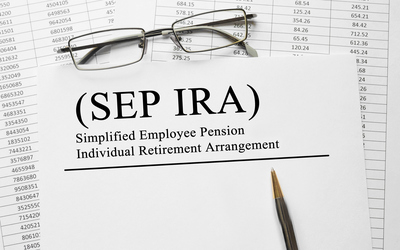A SEP IRA reads like a mess of letters, and spelling it out doesn’t necessarily help: The first part stands for simplified employee pension; the second for individual retirement account.
Translation: It’s a retirement account for business owners and self-employed individuals.
Who can open a SEP IRA?
The “simplified” bit is no lie: A SEP IRA is a basic retirement account, much like a traditional IRA. SEP IRA contributions are tax-deductible, and investments grow tax-deferred until retirement, when distributions are taxed as income.
Generally, SEP IRAs are best for self-employed people or small-business owners with few or no employees.
Here’s why: If you have employees whom the IRS considers eligible participants in your plan, you must contribute on their behalf, and those contributions must be an equal percentage of compensation to your own. Eligible participants are employees who are 21 or older, have worked for you for three of the past five years and have earned at least $600 from you in the past year.
For example, if an employee worked for you in 2016, 2017 and 2018, you would need to make a contribution for him or her for the 2019 plan year. If you want to stash away 15% of your compensation for yourself, you must also contribute 15% of that employee’s compensation to his or her plan. Employees own and control their own accounts.
Because of that rule requiring equal contributions as a percentage of compensation, a SEP IRA is generally best for self-employed people or small-business owners with few or no employees.
How much can I contribute to a SEP IRA?
This is where the SEP IRA stands apart from a traditional IRA. A regular IRA allows you to put away $6,000 in 2019, or $7,000 if you’re 50 or older (up from $5,500 and $6,500 in 2018). With a SEP IRA, you could stockpile nearly 10 times that amount.
There’s plenty of fine print, though; we’d expect nothing less from our friends at the IRS. SEP IRA annual contribution limits cannot exceed the lesser of:
- 25% of compensation
- $56,000 in 2019 (up from $55,000 in 2018)
The first limit, 25% of compensation, is also the limit for how much you can contribute for each eligible employee. The amount of compensation you can use to calculate the 25% limit is also limited to $280,000 in 2019 (up from $275,000 in 2018). There is no catch-up contribution at age 50+ for SEP IRAs.
You can combine a SEP IRA with a traditional or Roth IRA. If you’re an employee who is covered by a SEP IRA, employer contributions don’t reduce the amount you can contribute to an IRA for yourself, but the amount of your traditional IRA contribution that you can deduct may be reduced at certain higher income levels, due to the combination of both plans.
For more on that and Roth IRA income eligibility, see our post on IRA contribution limits.
What are the pros and cons of a SEP IRA?
We’ve outlined many of these above, but to briefly hit the highlights:
| PROS | CONS |
|---|---|
|
|
How do I open a SEP IRA?
Opening a SEP IRA is similar to opening a traditional or Roth IRA, though there are some additional paperwork and reporting requirements, especially if you have employees. Most IRA account providers also offer SEP IRAs, and you can open the account online.
The IRS outlines three steps for setting up your SEP IRA:
- Create a formal written agreement. You can do this with IRS Form 5305-SEP or through your account provider.
- Give eligible employees information about the SEP IRA. You can give them a copy of IRS Form 5305-SEP or get similar information through your account provider.
- Set up separate SEP IRAs for each eligible employee with the account provider.
How do I invest my SEP IRA?
It’s important to understand that a SEP IRA isn’t an investment itself; it’s an investment account. Once you’ve opened the account, you can choose from the investments that your account provider offers, a selection that typically includes stocks, bonds and mutual funds.
Once the account is open and funded, you’ll want to invest it according to your age, planned retirement age and risk tolerance. If you have a fairly strong stomach for market swings and a long time until retirement, your investment selection should sway toward stocks, specifically stock index funds, which track a segment of the market and hold a diverse mix of stocks within that segment.
The less time you have until retirement — and the less patience you have for a market downturn — the more you’ll want to allocate toward bonds and bond funds. You can also buy index funds for bonds.

